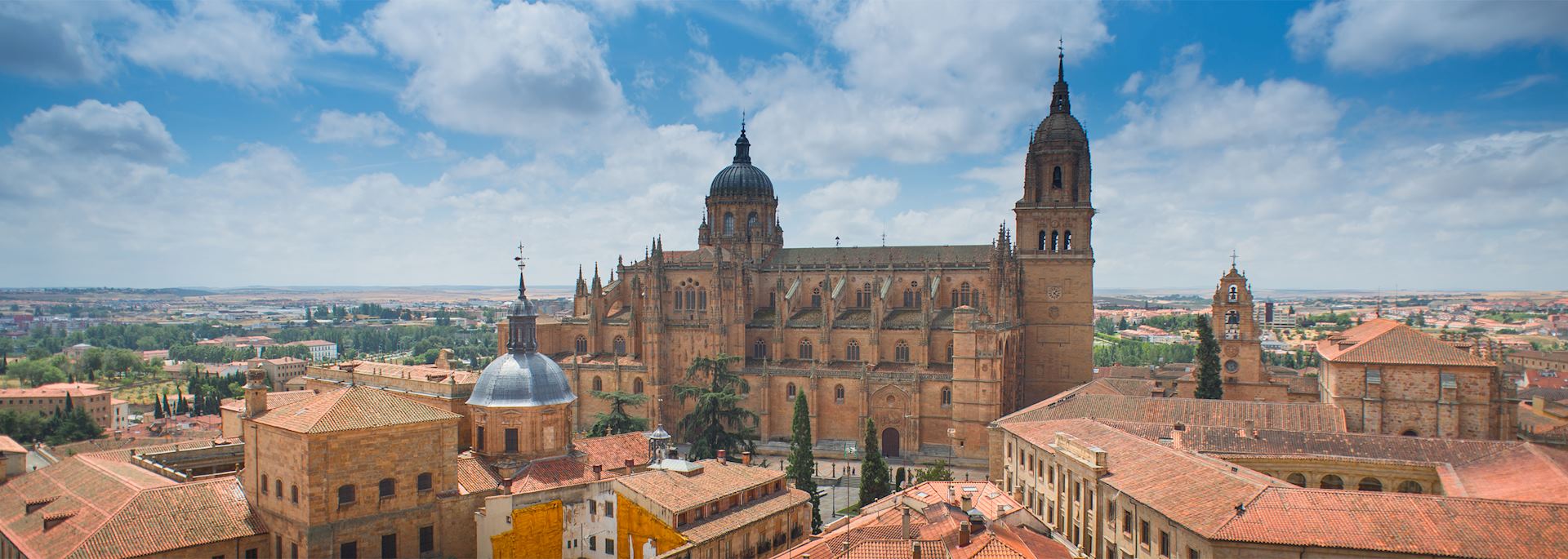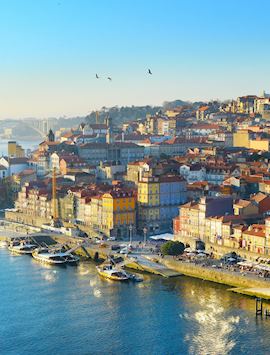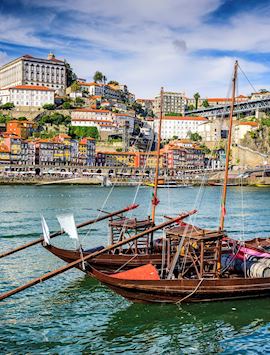Jump to:
Home to one of the oldest universities in Europe and a harmonious collection of Renaissance palaces, Gothic churches and Baroque squares, Salamanca showcases the architectural grandeur of Spain’s Golden Age.
A compact city that’s easy to navigate, Salamanca rewards you with the pomp and opulence of its august buildings. The city takes on a special air in the evening, when the golden sandstone of its historic buildings glows in the light of the setting sun.
Along with its distinguished history, this UNESCO World Heritage Site has a youthful vibrancy thanks to its large student population. The city’s university was established in 1134 and awarded a royal charter in 1218, it was one of the most prestigious seats of learning in the world for four centuries.
The university attracted Spain’s greatest minds: conquistador Hernán Cortés and writer Miguel de Cervantes are thought to have studied here, and Columbus came looking for backing for his explorations in 1486.
The university buildings mark the transition from Moorish rule in the city in a flurry of elaborate sandstone carvings of mythical heroes, religious scenes and coats of arms that decorate its façade. This Plateresque style of rich ornamentation reached its peak in Salamanca in the 16th century and combined with Gothic, Renaissance and Baroque construction techniques to impressive effect.
You’ll also see Salamanca’s distinctive architectural quality of displaying elements of diverse influences, often within the same structure, in many buildings around the city. The Plaza Mayor, the city’s main square, is particularly impressive and hailed as one of the most handsome public squares in the country.
The plaza is surrounded by Baroque galleries and arcades, and above the arches sit blue medallions sculpted with reliefs of significant local figures. Many sit empty, waiting for the next great salmantino to join the ranks. By night, the grand arches are illuminated, and the square is a popular meeting place on summer evenings.
The city also has two cathedrals, one Gothic and one Romanesque, which are joined by a connecting wall. The Old Cathedral is largely Romanesque, with a gilded, frescoed 15th-century altarpiece inside. Meanwhile, the late-Gothic New Cathedral is decorated in Churrigueresque style. Look for some curious additions among the orate detailing, such as a carved astronaut, added during renovations in the early 1990s.
A tower at the southwestern corner of the New Cathedral, the Puerta de la Torre, offers a bird’s-eye view of inside both cathedrals from the balconies before you emerge on the exterior terrace to look over the heart of the city.
Best time to visit Salamanca
Salamanca is at its best in April, when the weather is pleasant and visitor numbers are low. If you’re interested in the university’s exam and graduation traditions, May is a good time to arrive, although the city is much busier at this time of year. Alternatively, come in September or October, when the summer heat has receded and the streets are quieter.
who's been there
-
01993 838 92501993 838 081
- Make an enquiry
Suggested itineraries featuring Salamanca
Our itineraries will give you suggestions for what is possible when you travel in Salamanca, and they showcase routes we know work particularly well. Treat them as inspiration, because your trip will be created uniquely by one of our specialists.
Places near Salamanca
- Ávila 55 miles away
- Segovia 81 miles away
- El Escorial & Valle de los Caídos 86 miles away
- Madrid 110 miles away
- Toledo 116 miles away
- La Rioja 194 miles away
- Bilbao 212 miles away
- The Basque Country and La Rioja 215 miles away
- Córdoba 219 miles away
- Andalusia 249 miles away
- Seville 249 miles away
- San Sebastián 250 miles away
- Granada 285 miles away
- Ronda 294 miles away








